
The Free Press

“You feel like a man for killing a black man?”
Those words were hurled from the back of a courtroom earlier this month at Daniel Penny, a 24-year-old former Marine charged with second-degree manslaughter and criminally negligent homicide in the killing of Jordan Neely, a 30-year-old homeless man and sometime street performer whose tragic death on the F train on May 1, 2023, was captured on video.
Penny is white. Neely was black.
To Rachel Cyprien, the woman who did the shouting as Penny exited the courtroom, there are no two ways of looking at what happened on the subway that day, when Penny placed Neely, widely described as “erratic” and “threatening” by fellow passengers, into a fatal choke hold. It is simply “another lynching of a black man.”
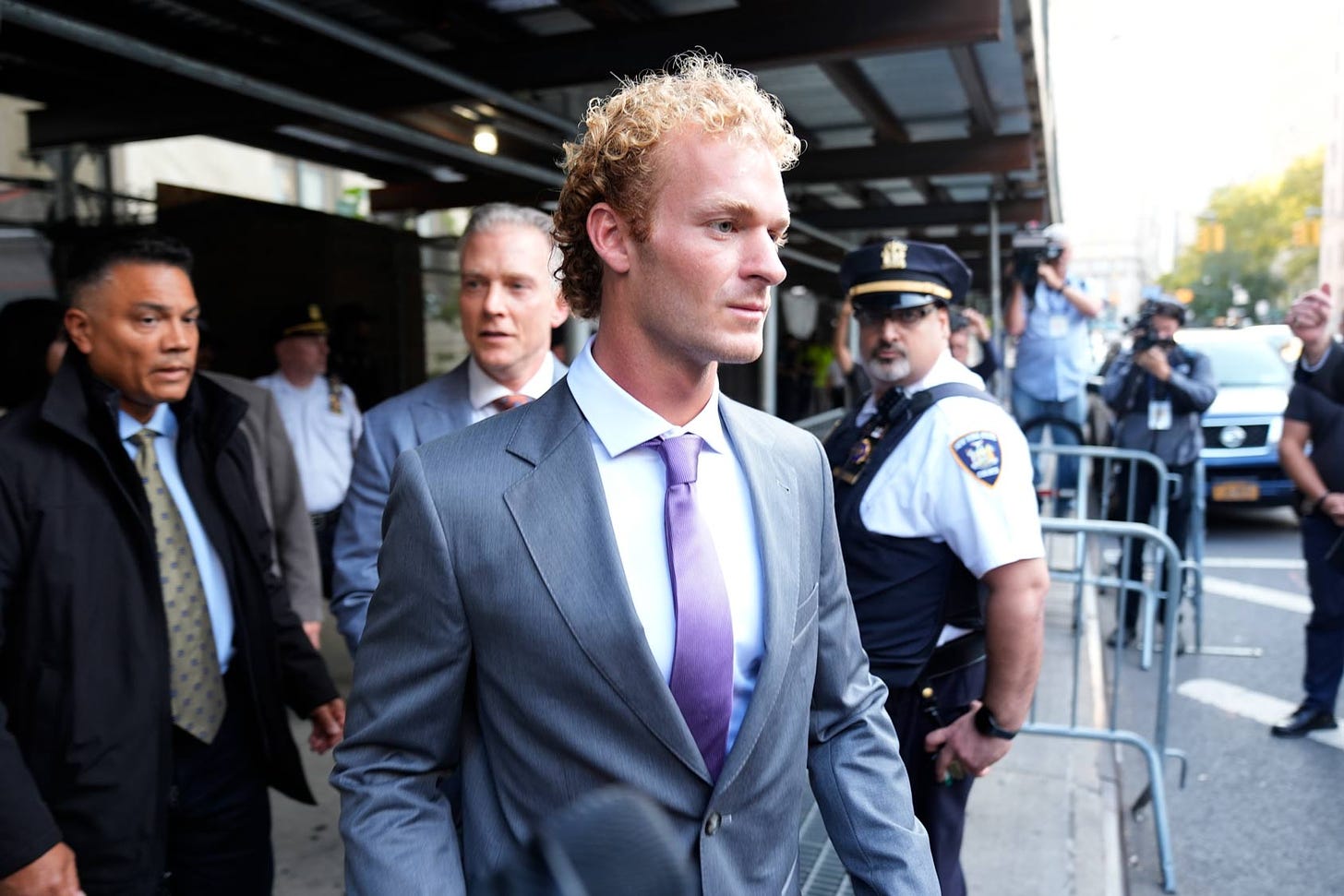
“He’s a white man, a Marine, a trained killer who killed a black man, a homeless man, and no one cared,” said Cyprien, a real estate broker who wouldn’t state her age but kept a metal cane in the crook of her elbow.
To her—and many others—Penny is a villain, while Neely, a former Michael Jackson impersonator who grew up in and out of New York homeless shelters, could’ve used “the smallest gesture of humanity,” in the words of Rep. Alexandria Ocasio-Cortez—rather than Penny’s choke hold. In this, Cyprien was echoing a consensus that quickly emerged after the video of the incident went viral: that this was “another Black man publicly executed,” as then–Rep. Jamaal Bowman put it on X.
Within days, protesters were taking over subway stations, disrupting rush-hour traffic with chants like “homeless lives matter.” In the following weeks dozens were arrested, with police even seizing an unlit Molotov cocktail from a protester. At a funeral service in Harlem, Reverend Al Sharpton laid Neely to rest by remarking that Good Samaritans help the homeless, not “choke them out.”
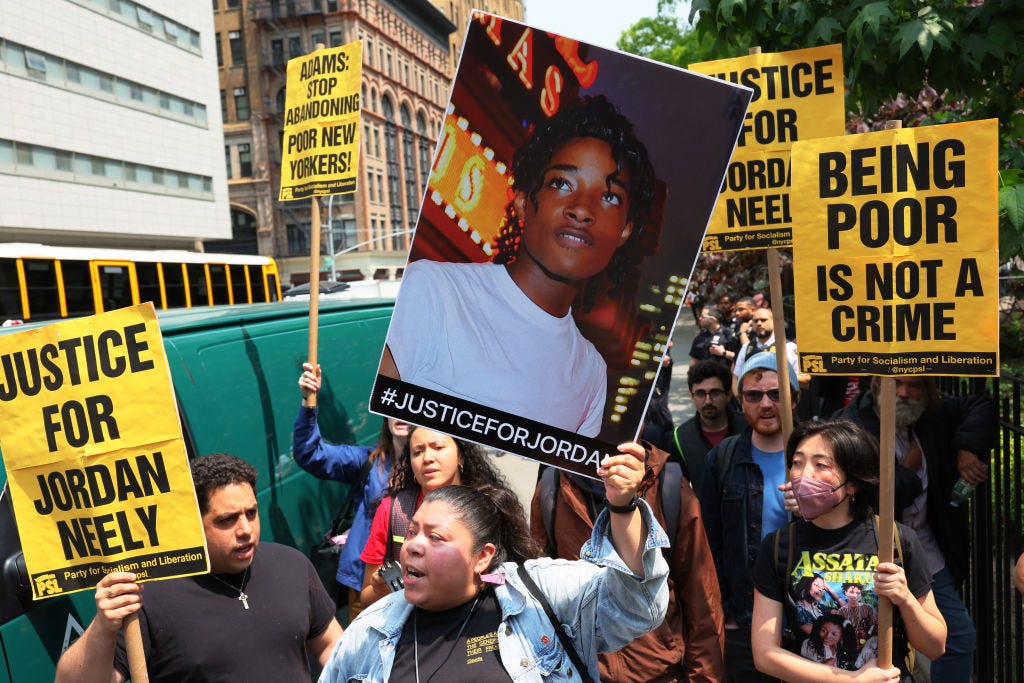
Whether you saw the former Marine as a “Good Samaritan,” in the words of Florida governor Ron DeSantis, or his actions as a “lynching,” according to Julia Salazar, a New York state senator, seemed to depend more on preconceived assumptions about public order, self-defense, and the role of racism in American life than on the actual known facts of the case.
The fact, for example, that Neely suffered from severe untreated mental illness, bound up with a history of violence and drug abuse. The fact that he had been arrested more than forty times, most recently for punching a 67-year-old woman in a subway station. The fact that a judge cut his prison sentence short to enroll him in a minimum of fifteen months in a treatment program, which he walked away from after less than two weeks. The fact that no attempt was made to locate him, but there was an open warrant for his arrest when his increasingly erratic behavior on the F train began to alarm passengers, including Penny, who put him in the choke hold that ultimately killed him. And the fact that witnesses noted that two other men helped hold him down that day, including a man of color, as Neely tossed garbage and screamed that he was “ready to die” or “go to jail” because he was tired of being hungry.
Daniel Penny is not being tried for a hate crime—no evidence has yet emerged that shows he was motivated by racism that day. But those facts have done little to puncture the narrative about white supremacy that followed him into court on October 3, his first major court appearance before his trial. That trial begins Monday. He faces up to twenty years in prison for what happened on that spring afternoon, in which he entered the subway at Second Avenue as a student and left at Broadway/Lafayette as a homicide suspect.
On the thirteenth floor of New York City’s criminal court, Penny sat sandwiched between his lawyers, two athletic-looking men from Long Island, opposite a duo of female prosecutors from the Manhattan District Attorney’s office. Their purpose that day: to have a judge decide on the admissibility of footage that has been kept under wraps since the incident. The footage captured at least a half-hour of video from police body cameras, pulled from multiple officers on the scene, and Penny’s full interrogation at the local police precinct that followed.
The prosecution wants this evidence admitted because they believe it is damning—especially when Penny tells an officer “I just put him out,” referring to Neely. The DA argues that Penny recklessly endangered Neely by choking him for six minutes.
“It doesn’t matter that other witnesses said that this person that was taken out had scared people before that,” Assistant District Attorney Dafna Yoran told the judge. “That has absolutely no relevance to whether the defendant is responsible ultimately.”

Thomas Kenniff, one of Penny’s defense lawyers, argued that all of the witnesses described Neely as the “initial aggressor, terrifying, unhinged, you know, threatening life and limb of the other passengers on board.” At the same time, witnesses described Penny’s actions as “very restrained.”
Kenniff added: “It wasn’t really a choke hold. He was just containing him.”
The New York Times boiled the full day of testimony, in which five NYPD officers testified about the incident, into a story titled “Penny Minimized Duration of Chokehold During Questioning, Video Shows,” pointing out the alleged inconsistencies between Penny’s initial descriptions of the event and video evidence captured by police. To Gothamist, a local NPR-affiliated publication, the takeaway was that Penny “told police at the time that he had put the man ‘in a choke.’ ” Even the New York Post focused on Penny’s statement “I just put him out” in what it called “dramatic video” from the day of the incident.
Almost all of the reports left out that after the alleged choke hold, an officer administered a dose of the opioid antidote Narcan to Neely—which could point to the victim’s history of drug abuse. The same officer who administered the Narcan, Sergeant Carl Johnson, later called Penny a “Good Samaritan” in his summary of the crime. And in a 14-minute video compilation played by the defense, one woman was shown standing in shock on the subway platform, telling an officer that Penny “literally saved the train.”
When we broke for lunch, I caught Rachel Cyprien, the black realtor who’d taken the day off to watch the hearing, outside the courthouse to ask if any of those revelations—the Narcan, the witness statements describing Neely as “threatening,” and the favorable descriptions of Penny in the police write-ups—changed anything for her.
“No,” she said. “This is all bullshit. This is just a show because they’re going to let him off.”
Then, she added, “This is another George Floyd.”
Less than 24 hours later, the judge released his decision: The footage in question is fair game. In the trial, which starts with jury selection on Monday, the 12 jurors will get to see for themselves what transpired that fateful day.
On May 1, 2023, as progressive commentators and members of the Squad raced to portray Penny as a racially motivated murderer, the people of his hometown, West Islip, a hamlet of Long Island, were left wondering how it was that people could get the man they knew so wrong.
A few weeks after Neely died, I spent four days in West Islip to ask Penny’s family, friends, and neighbors: What kind of man is he, really?
I encountered Stacey Volke outside the local elementary school. When I asked her if she knew Penny, she grimaced like she was holding back tears. Or anger.
“Yes,” she said. “And he’s one of the best boys you’ll ever meet—a great kid from a great family.”
She said Daniel is the son of her childhood friend Stephen Penny, who grew up “four to five houses down” from her on a tree-lined drive just steps away from the bay. It’s the kind of street where residents fly American flags out front, and cars have bumper stickers bearing the Marine Corps motto Semper Fi. Now, the average house on the block is worth more than a million dollars, but Penny told the New York Post—in one of his two media interviews to date—that the three-bedroom, three-bath house he grew up in dates back generations.
“My grandmother was raised there,” he said of the tan cottage, first purchased by his great-grandfather in the 1960s. “And then my father and his brothers were raised there. And then me and my sisters were able to grow up there.”
“We wouldn’t have been able to live that lifestyle on the water if it wasn’t for my family,” said Penny, who grew up surfing and playing lacrosse.
Like most people in West Islip, an area that Donald Trump won by a landslide in the last two presidential elections, Volke was on guard, feeling that the media had tarnished the reputation of her friend’s son. She added that she planned to donate to the defense fund started by Penny’s lawyers, which at the time had already surpassed $2 million, because “just the legal fees alone could destroy them.”
“They say because he’s military trained he should’ve known what he’s doing,” she said of the criminal charges Penny is facing. But, she added, “Adrenaline can get the best of anyone.”
And “there were two others” who held Neely down on the train that day, she continued. “Why aren’t they being tried?”
The next day I met a waitress, wearing a gold cross around her neck, working a weekend lunch shift at a local diner. She turned out to be a former classmate of “Danny,” as most locals refer to Penny.
I asked her what she knew about the way Penny grew up. Was he imbued with “white privilege,” as his critics claimed?
“I always just thought of him as middle class,” said the waitress, who declined to give her name. “Nothing fancy. Just regular.”
“He’s not capable of doing anything terrible and the subways in the city—those are terrible,” she added. “There’s always a gray area.”
Suffolk County, where West Islip is located, is one of the largest veteran communities in the country. The fire station has a 9/11 memorial out front, with the names of firefighters carved in stone—an ode to the nearly 100 town residents, including firefighters and law enforcement officers, who died in the attacks.
When he was just shy of 19, Penny enlisted in the Marines. He never saw combat but got to travel, serving two years in a unit that was deployed in Kuwait, Bahrain, Oman, Jordan, Greece, and Spain.
Then, in June 2021, he “separated from service,” a Marine Corps representative told The Free Press, declining to specify if that qualified as an honorable discharge. In 2022, he moved to New York City in search of a new path. Last winter, he enrolled in an architecture program at a local Brooklyn college, working two jobs on top of his classwork.
Then on May 1, 2023, he met Jordan Neely.
Ever since then, Penny has become a Rorschach test: a mirror that reflects not what you think of Daniel Penny but what you think of white men, black men, racism, policing, mental illness, and the thing that we call “the system.” In the days after the killing, that’s what Jordan Neely’s Aunt Carolyn wanted to talk about. “The whole system just failed him. He fell through the cracks of the system,” she told the New York Post.
Penny has been virtually silent since the day his life changed forever. Though The Free Press asked for an interview at least a half-dozen times, all requests were denied. At the hearing I attended, he didn’t say a word.
When I visited West Islip last spring looking for Penny, a lifeguard told me to try Gilgo Beach, saying “I think that’s where he normally surfs.” Another lifeguard told me to check out Democrat Point, a hard-to-reach section of a nearby state park.
I never saw him. But later, on a whim, I checked the blog of one of his old Marine buddies. There Penny was, snapped in a photo, taken on the shores of a Long Island beach.
By then, Penny had been charged with the crime that had divided America. But at that moment he seemed carefree. Shrouded in a dark hoodie, baseball cap, and sunglasses, he is kneeling next to a pickup truck in the photo. It’s a clear day, and he is posing next to a sticker on the truck’s bumper that reads: Justice for Daniel Penny.
Looking at the camera, Penny is grinning as he flashes a thumbs-up.

Olivia Reingold is a writer for The Free Press. Read her piece about Hispanics angered by the migrants in New York City, “They’re Black Democrats. And They’re Suing Chicago Over Migrants,” and follow her on X @Olivia_Reingold.
And to support more of our work, become a Free Press subscriber today:





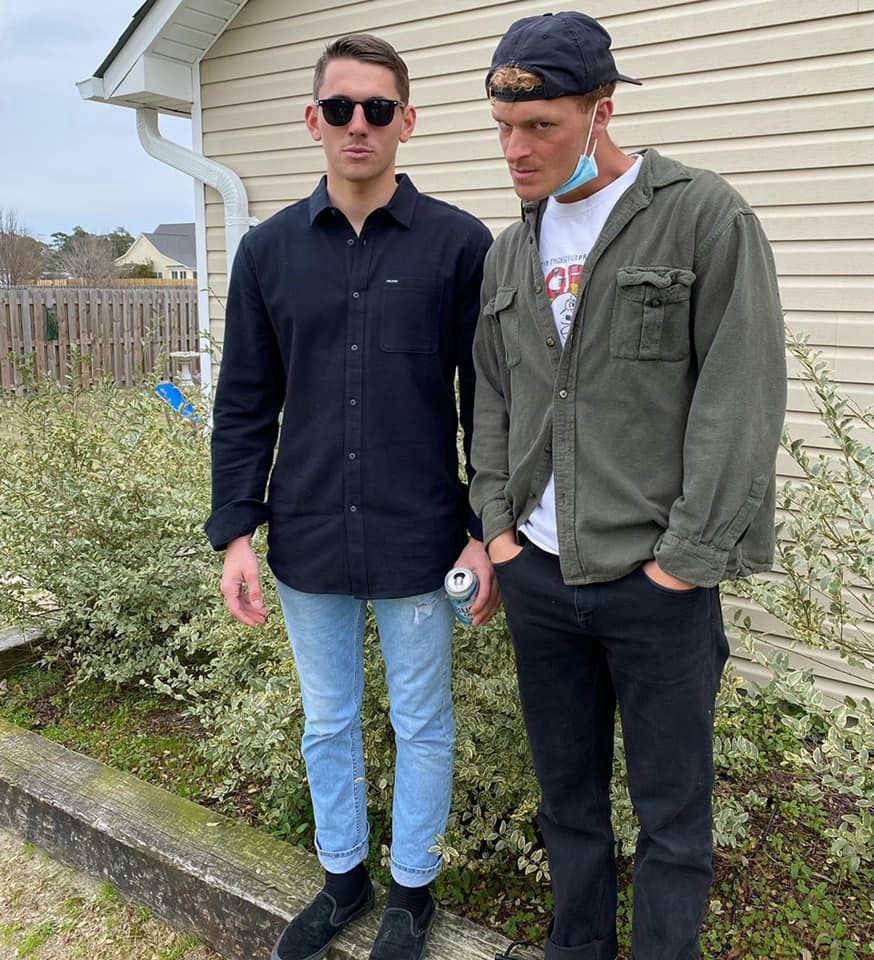




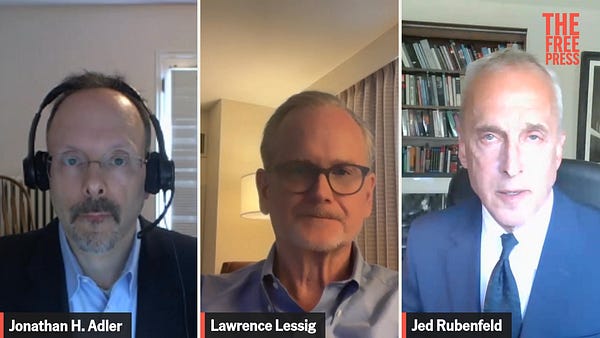



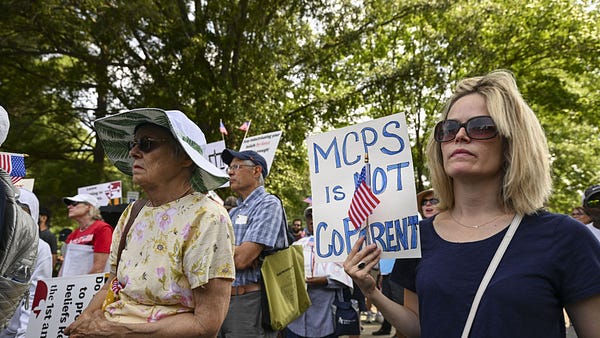



Facts matter, and this piece presents them. The rush to judgement by the 'woke' crowd was, and is, predictable. Penny is being pilloried not for what he did, but for who he is, as if race/color is the only thing that matters. No.
six minutes?
how long was it for george floyd?